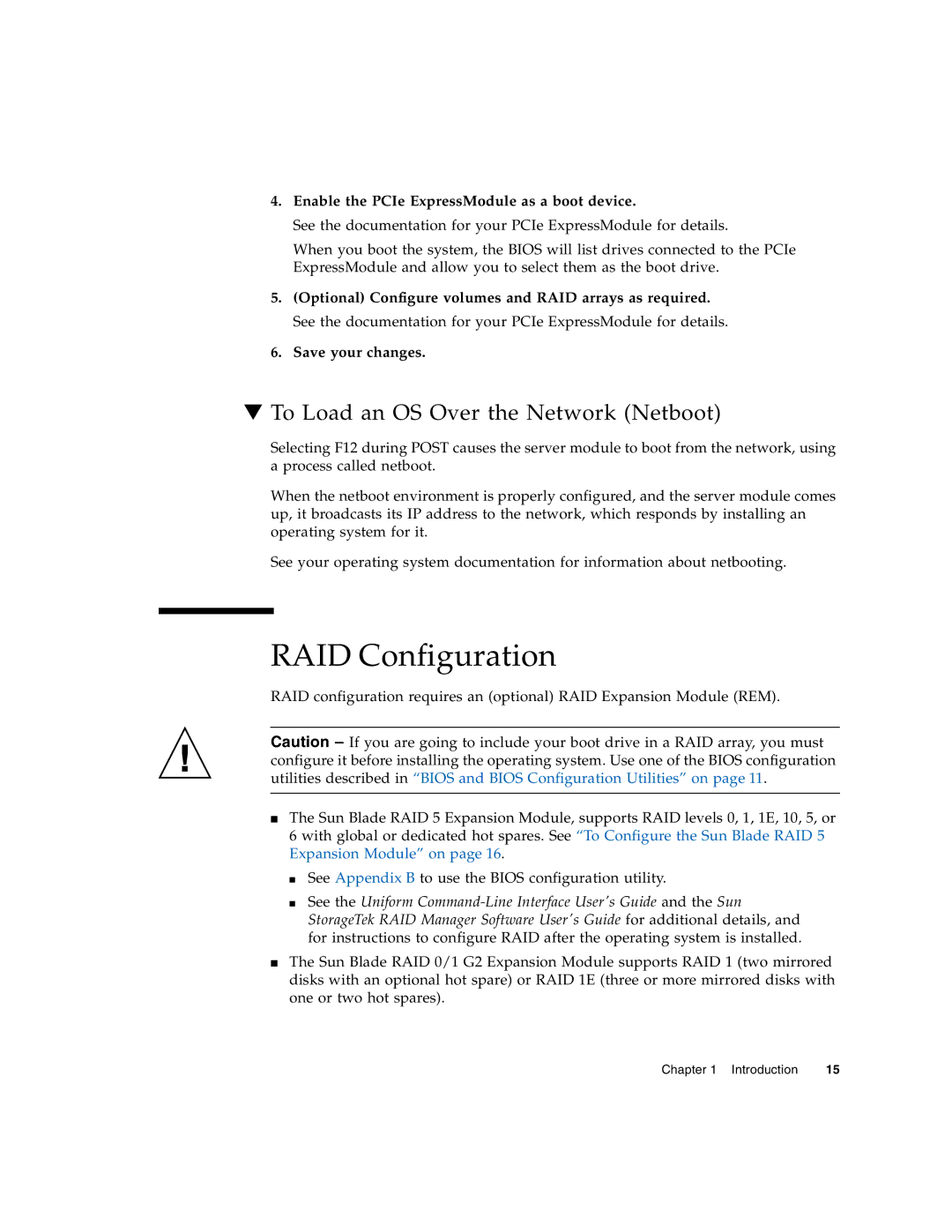
4.Enable the PCIe ExpressModule as a boot device.
See the documentation for your PCIe ExpressModule for details.
When you boot the system, the BIOS will list drives connected to the PCIe ExpressModule and allow you to select them as the boot drive.
5.(Optional) Configure volumes and RAID arrays as required. See the documentation for your PCIe ExpressModule for details.
6.Save your changes.
▼To Load an OS Over the Network (Netboot)
Selecting F12 during POST causes the server module to boot from the network, using a process called netboot.
When the netboot environment is properly configured, and the server module comes up, it broadcasts its IP address to the network, which responds by installing an operating system for it.
See your operating system documentation for information about netbooting.
RAID Configuration
RAID configuration requires an (optional) RAID Expansion Module (REM).
Caution – If you are going to include your boot drive in a RAID array, you must configure it before installing the operating system. Use one of the BIOS configuration utilities described in “BIOS and BIOS Configuration Utilities” on page 11.
■The Sun Blade RAID 5 Expansion Module, supports RAID levels 0, 1, 1E, 10, 5, or 6 with global or dedicated hot spares. See “To Configure the Sun Blade RAID 5 Expansion Module” on page 16.
■See Appendix B to use the BIOS configuration utility.
■See the Uniform
■The Sun Blade RAID 0/1 G2 Expansion Module supports RAID 1 (two mirrored disks with an optional hot spare) or RAID 1E (three or more mirrored disks with one or two hot spares).
Chapter 1 Introduction | 15 |
